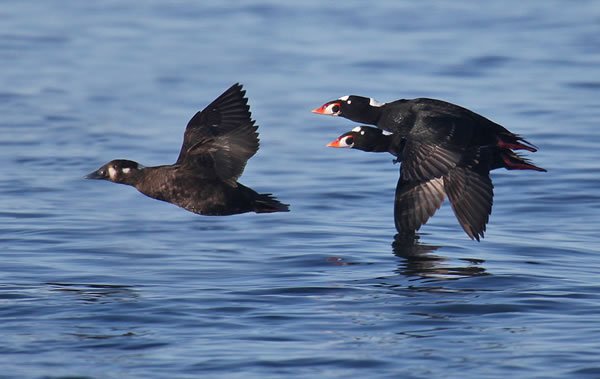Completing the Picture: Spring Body Condition and Breeding Propensity of Surf Scoters along the Pacific Coast

Project Number: 93
Year Funded: 2007
Lead Institution(s): US Geological Survey
Project Lead: John Takekawa
Collaborator(s): Susan Wainwright-De La Cruz (USGS), John Eadie (UCDavis), Matthew Wilson (UCDavis), Dan Esler (SFU), Erika Lok (SFU), Eric Anderson (UW), Jim Lovvorn (UW)
Location: Pacific Coast
Focal Species: Surf Scoter (Melanitta perspicillata)
Project Description: Pacific Surf Scoters have been the subject of a growing body of research during winter, however very little is known about their spring migration ecology, and even less about breeding ecology. Spring migration conditions have important implications for waterfowl productivity, and nutrient reserve levels and body condition during spring migration have been identified as potentially important factors affecting broad-scale and long-term population declines. To assess spring body condition and breeding propensity of Pacific Surf Scoters, collections were conducted during late spring 2005 and 2006 along the coast of southeast Alaska and the greater Yellowknife area, Northwest Territories, Canada. Project objectives were to 1) determine how body condition and nutrient acquisition changes during spring migration and how that relates to wintering areas, 2) identify the reproductive strategy of Pacific Surf Scoters, and 3) determine what proportion of the population is capable of breeding, and if this potential can be measure on spring staging grounds.
Project Reports:
